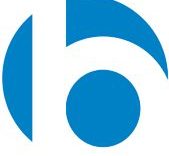
by Guest Blogger – Brooke St clair
I have spent a significant proportion of my working life in procurement at a government organisation where a large part of my role was to evaluate tender submissions from service providers and contractors.
One of the things that used to frustrate me the most about evaluating tenders was dealing with qualifiers and assumptions of service providers because of how difficult it made comparing apples with apples to ensure that our organisation achieved the best value for money outcome from the procurement activity. Typical qualifiers included exclusions from the submitted pricing related to travel, meetings, contingencies etc. Others were around scope exclusions, obligations that were required by the client or areas that we not included in the price. This was particularly frustrating as a procurement practitioner when we specifically requested tenderers provide pricing models that included such incidentals and ancillary costs and discouraged scope exclusions when submitting lump sum prices.
What was also interesting is how often myself and my fellow evaluation panel members missed the fact that the pricing models of the service providers had these qualifiers and assumptions and the lack of understanding of the potential impact that this could have on the final cost of engaging that service provider on that project. This is particularly relevant on large infrastructure projects where qualifiers and assumptions around risk allocation, risk transfer, scope exclusions, plant and equipment, delays and contingencies can add a significant percentage to the final contract price and also lead to substantial variation claims for those ‘extra’s that you thought were included in the fixed fee. For tips on how to minimise the impact of contract variations see our previous blog ‘Contract variations – focussing on the cause rather than the symptoms‘ .
However, having now worked on the other side of the fence where I am writing proposals and responses to requests for tender, I can now understand the rationale behind service providers and consultants having qualifiers and assumptions in their bids. Let’s be honest, a lot of organisations can be ambiguous in stating their scope, commercial and technical requirements in tenders and probity obligations means organisations can be reluctant to talk to tenderers to clarify these ambiguities once the tender is released. This makes it very challenging as a service provider to accurately develop a pricing structure for a tender that enables an organisation to make a suitable margin on the job whilst still being competitive enough to be in the running to win the project as well as deliver on the outcomes envisaged by the client. These factors make submitting tenders a risky process for service providers as if you have misunderstood the requirements of the tender in any way there is a high possibility that this will erode your margins on the project and can actually lead to making a loss on the job and/or not meeting the expectations of the client.
The use of these qualifiers, scope exclusions and assumptions is therefore a risk mitigation exercise for service providers to clearly state their commercial expectations in bidding for the work. The proposal qualifiers, assumptions and exclusions allow suppliers to identify and mitigate the key risks of the project to ensure it is clear as to what is in the scope and what is not. This assists greatly in the management of variations, managing client expectations, scope creep and other key areas that can lead to erosion of margins.
The challenge I have learnt is how important it is to align both parties around the price and impact of these qualifiers and assumptions. One step that is often missed that can work through this alignment is the commercial negotiation which allows both parties to clarify why these assumptions have been put in the tender and what this means for delivering on this project. This combined with good risk allocation up front as part of the procurement and clear expectations on expense allocation between parties will minimise the challenges of surprises during the tender linked to not clarifying the qualifiers and assumptions up front prior to engagement. The Project Expense Table and the Risk Allocation Table are great tools that we use with our clients at BRS to assist them with this process.
Get clear on how to interpret assumptions and qualifiers. It will allow you to compare apples with apples and make the best decision on your requirements for the project. To assist both parties on the types of qualifiers and assumption we often see, we have developed a set of standard qualifiers, assumptions and exclusions that we use for our tender submissions which are tailored/refined for each submission. This enables us to be clear on expectations upfront with the client so there are no surprises for either party. A win-win situation!



